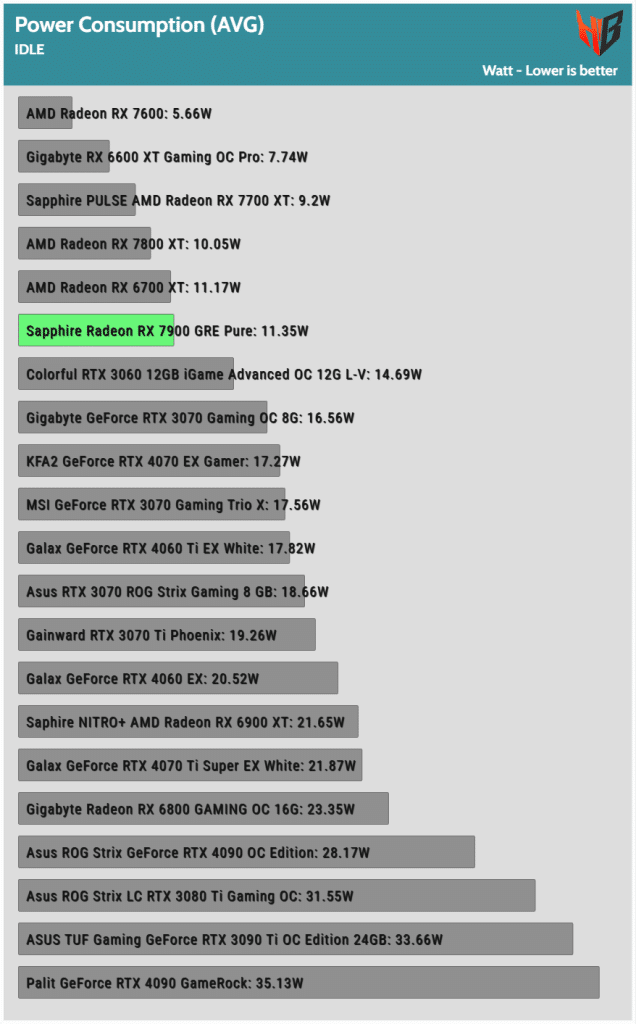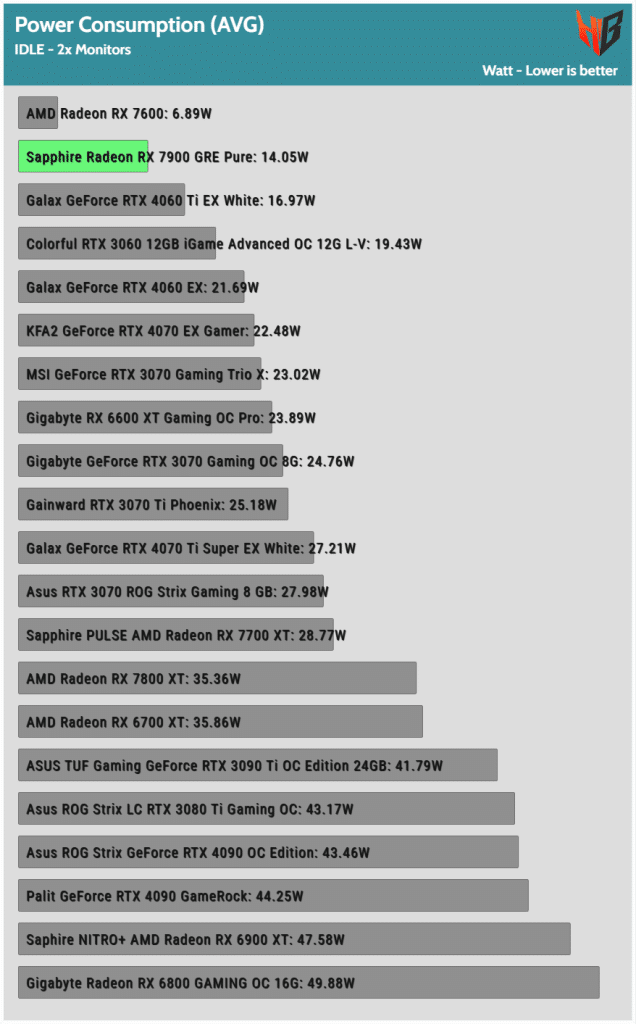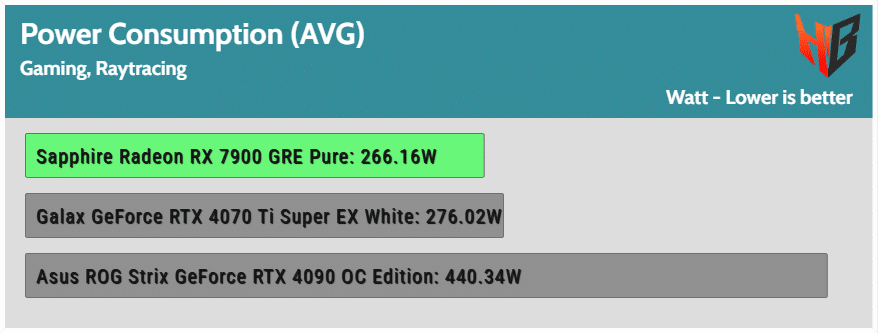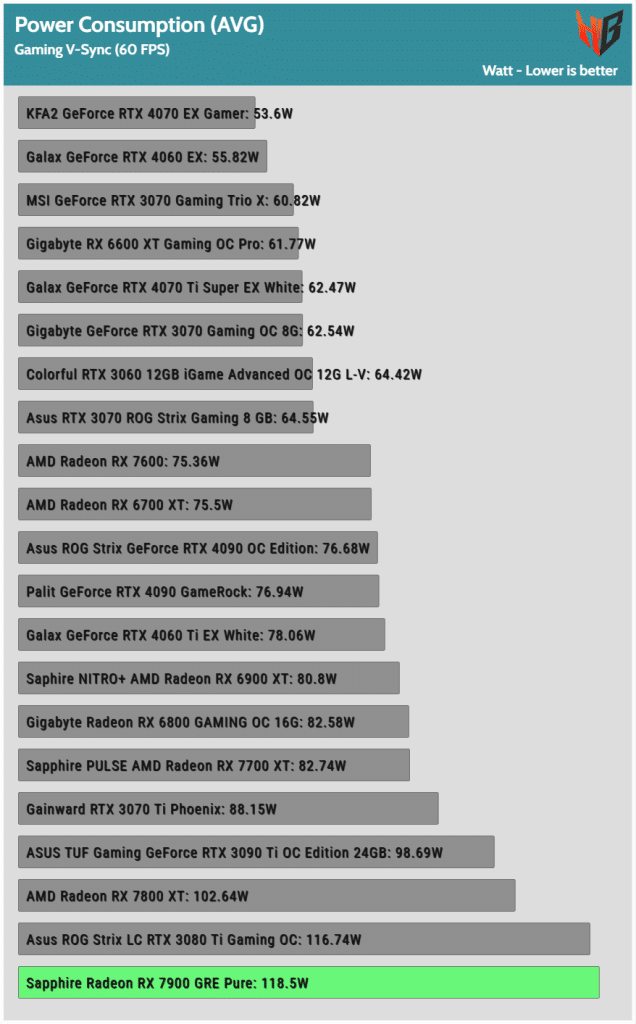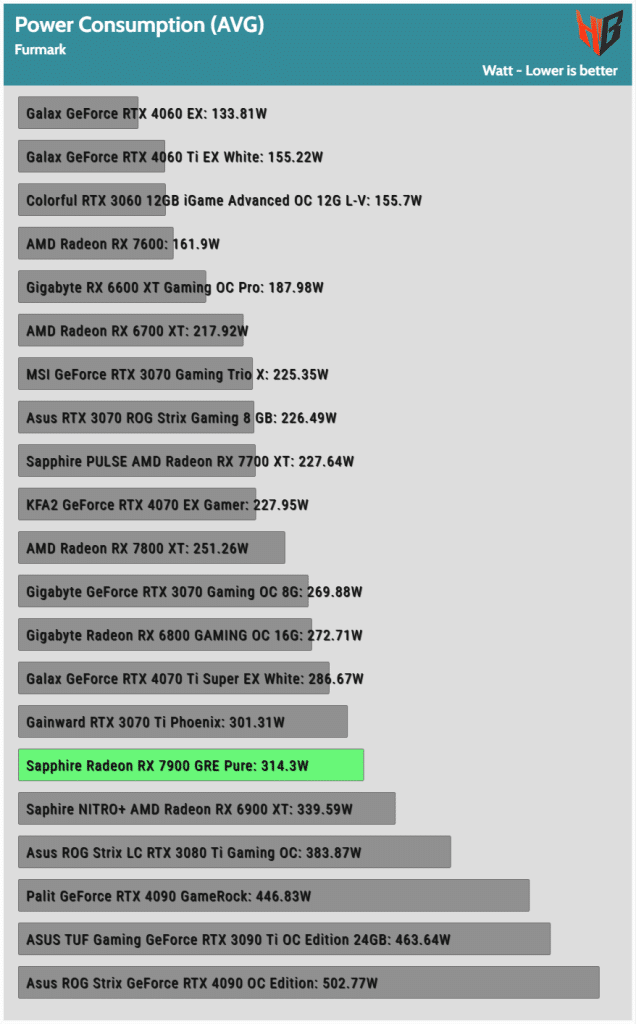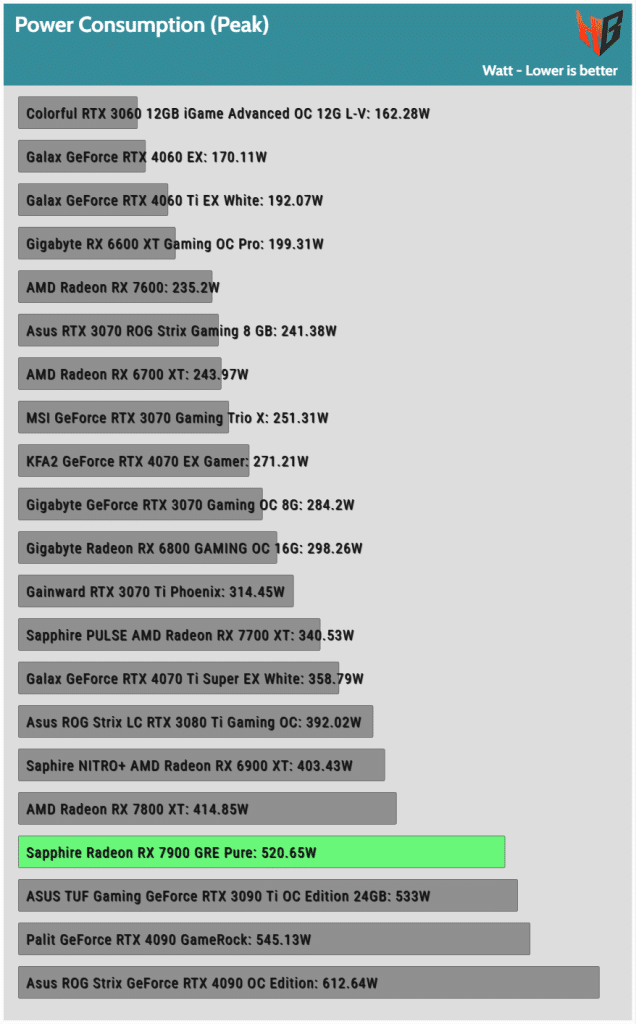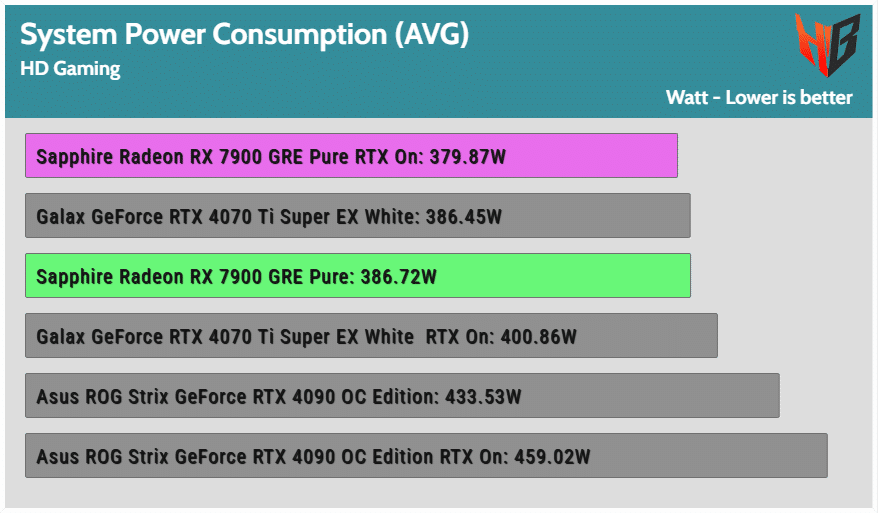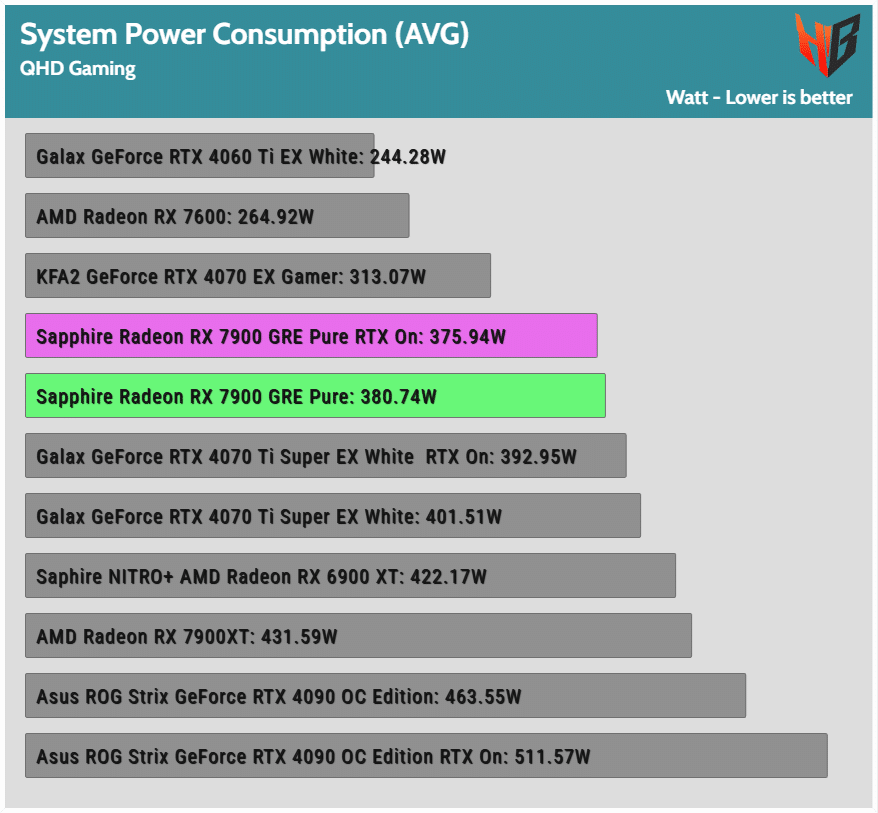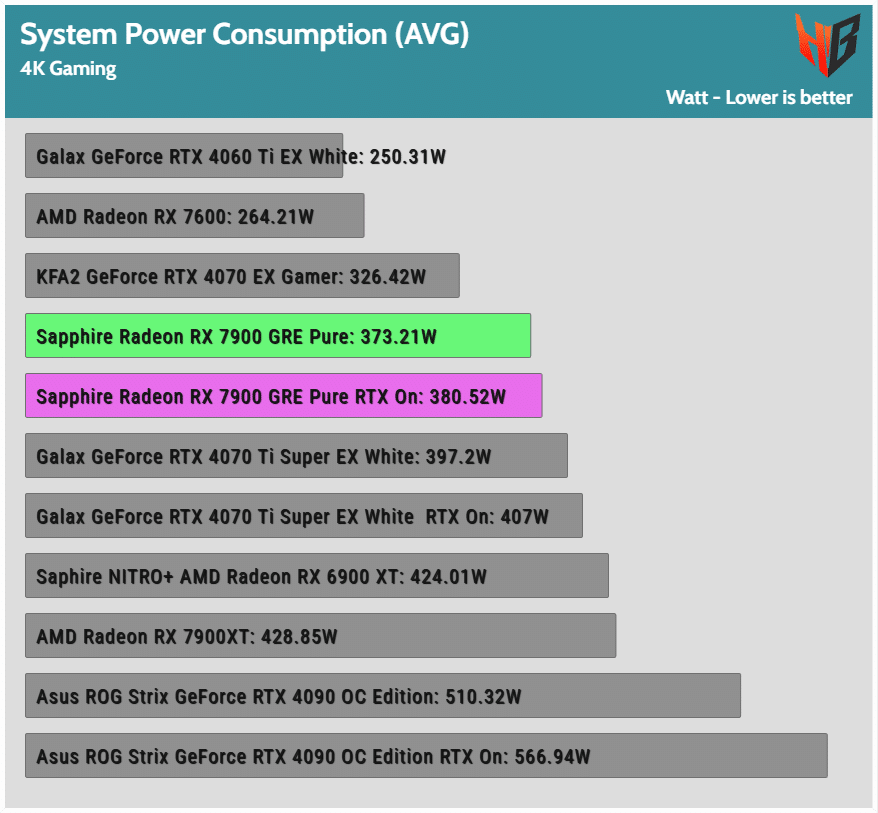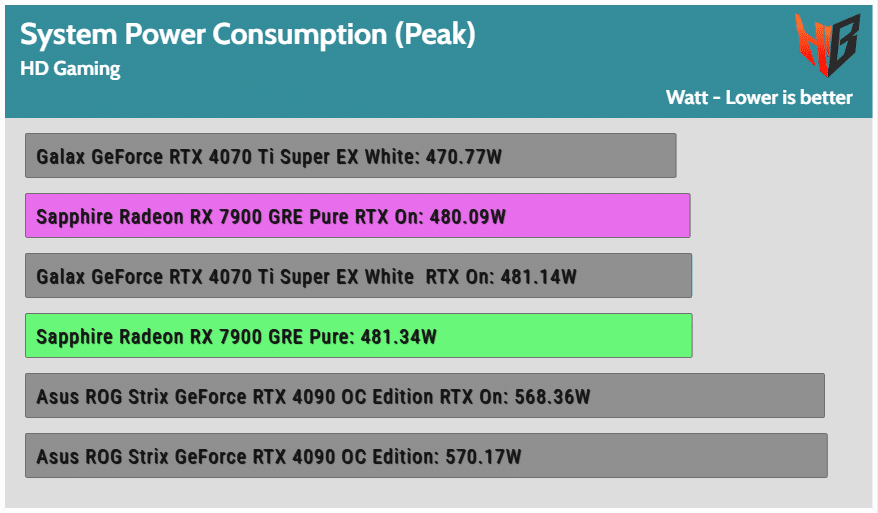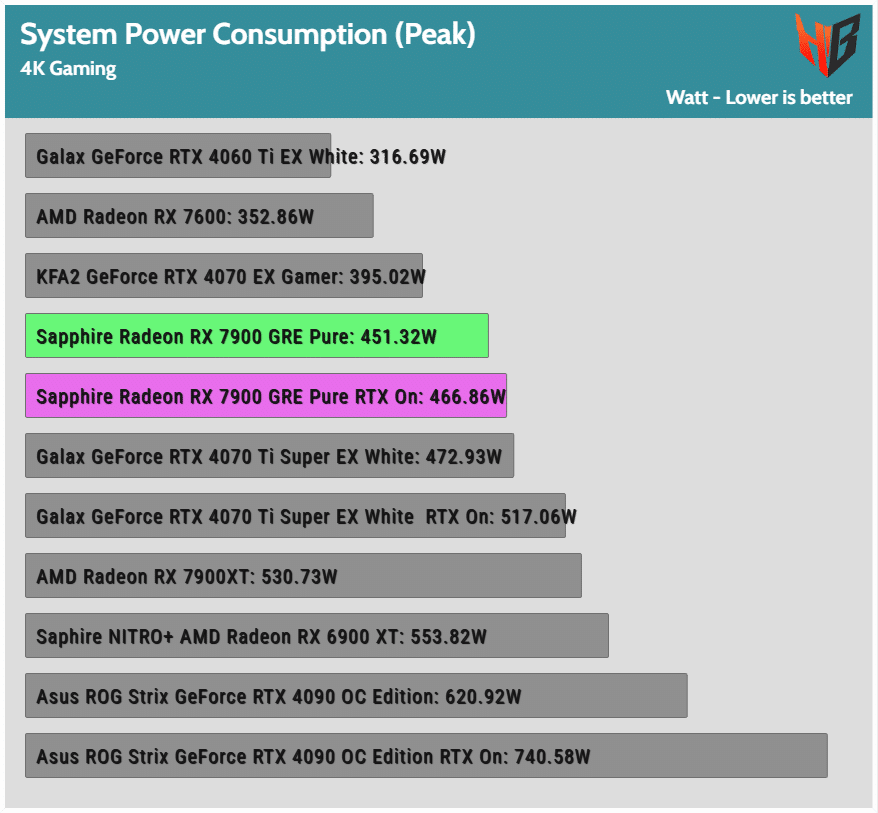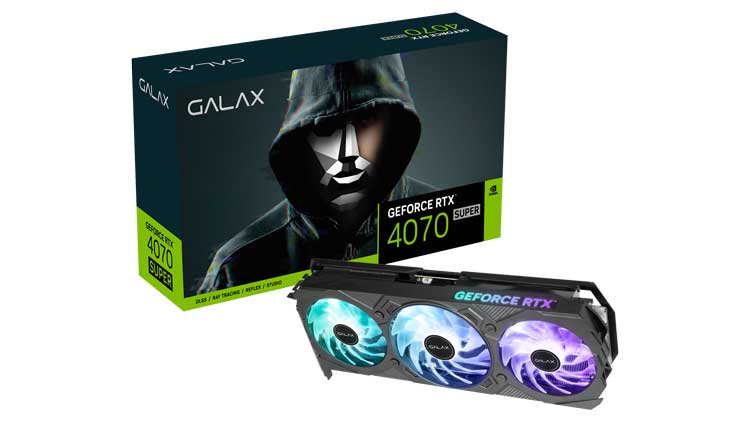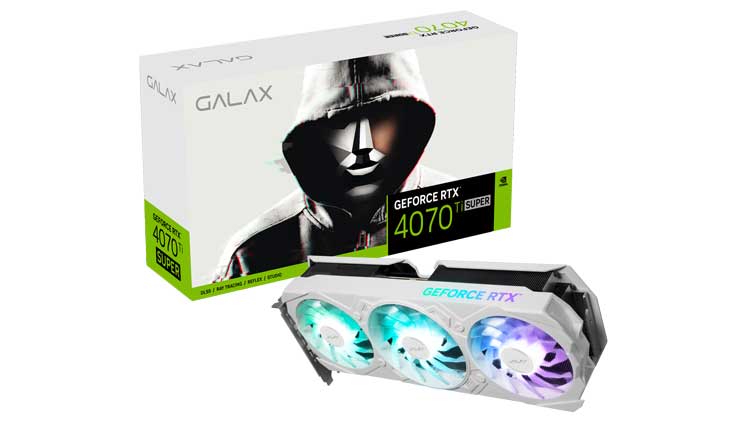Power Consumption Measurements – Details
All power consumption readings have to do with the graphics card alone and not the entire system’s power consumption. I use Powenetics v2, which allows me to measure almost every system component with high accuracy, including the GPU and the CPU, and with very high poll rates, up to 1000 readings per second, so I can “catch” any nasty power spikes.
I provide below more details about my power consumption measurement procedure.
Idle: The system is idle and at UHD resolution, with no windows or active programs. I let the graphics card warm up for more than 15 minutes and I take the average reading over a ten-minute period.
Multi-monitor: I connect two monitors to the graphics card under test. Both are set at 4K resolution. The system is idle with no active windows, and the refresh rate is at 60Hz on both monitors. With higher refresh rates, expect increased power consumption.
Video Playback: I use VLC Media Player to reproduce a 4K 30 FPS video encoded with H.264 AVC with an overall bitrate of 112 MB/s. All modern GPUs support this codec’s decoding.
Gaming: I use Cyberpunk 2077 at UHD for high-end GPUs and QHD for low-end ones that cannot handle this game at UHD or ultra settings, and raytracing is disabled along with DLSS/FSR and Frame Generation. I run my benchmark scene to obtain all required power consumption readings. I also log temperature and GPU fan speed. The latter is used for noise calculations.
Gaming Raytracing: Same as above, but I enable raytracing (Ultra Preset) and disable DLSS, FSR, and Frame Generation.
Gaming Vsync: I run Cyberpunk 2077 at HD resolution at medium graphics settings and with V-Sync enabled. I don’t use high graphics settings to allow all GPUs, even low-end ones, to be close to 60 FPS.
Furmark: I let this power virus run for 10 minutes to obtain all required power consumption readings. I also log temperature and GPU fan speed. The latter is used for noise calculations.
Rendering: I render footage containing many effects in Davinci Resolve at 4K output and with the H.264 codec. I also log temperature and GPU fan speed. The latter is used for noise calculations.
Peak Power Consumption: Before I start Furmark or any other demanding GPU benchmark, the transient load the benchmark applies to the graphics card’s voltage regulator modules leads to power spikes, which I record with the Powenetics v2 system, utilizing its 1000 readings/sec poll rate. These measurements show which PSU is suitable for the specific GPU, but please note that the CPU also has power spikes, so you must also consider them.
System Power Consumption: Cyberpunk 2077 at three resolutions, UHD, QHD, and HD, at the Ultra Preset. Raytracing is disabled along with DLSS/FSR and Frame Generation. These readings provide the total power consumption of the system, not only the GPU’s. I provide average and peak readings. The last will help you choose the power supply that will meet your needs.
IDLE Average Power Consumption (GPU only)
Power consumption in desktop and IDLE is low, with either one or two monitors connected. Please note that as the refresh frequency increases, the power consumption will follow.
Multimedia Average Power Consumption (GPU only)
Media playback power consumption is increased.
Gaming Average Power Consumption (GPU only)
Gaming power consumption is not that high, except with Vsync enabled and FPS capped at 60Hz, a rare usage scenario.
Furmark & Rendering (GPU only)
As expected, power consumption is increased in Furmark, and the same goes for rendering.
Peak Power Consumption (1ms, GPU only)
The peak power consumption is high at almost 521W. This peak lasted for ms, so it doesn’t create issues with the pair of 6+2 pin PCIe feeding the card with power.
System Power Consumption (Average Power Consumption)
The system’s power consumption with the AMD Ryzen 7 7800X3D processor is not high. A good 550-650W PSU could handle the system, if you don’t have a ton of ARGB devices or and many HDDs. The ideal PSU is a 750W one to keep the average power consumption at around 50% of the PSU’s max-rated capacity.
System Power Consumption (Peak Power Consumption)
The peak power consumption doesn’t exceed 500W. This doesn’t mean you should get a 500W PSU for this system! Because you will operate it >80% of its max rated capacity during gaming, meaning that its efficiency won’t be at its peak performance region.
- Prologue & Technical specifications
- AMD’s Key Technologies
- Box & Contents
- Part Analysis
- Specifications Comparison
- Test System
- Game Benchmark Details
- Raster Performance
- RT Performance
- RT Performance + DLSS/FSR Balanced
- Raytracing Performance + DLSS/FSR Balanced + FG
- DLSS/FSR Balanced (No RT)
- DLSS/FSR Balanced + FG (No RT)
- Relative Perf & Perf Per Watt (Raster)
- Relative Perf & Perf Per Watt (Raster + DLSS/FSR)
- Relative Perf & Perf Per Watt (RT)
- Relative Perf & Perf Per Watt (RT + DLSS/FSR)
- Relative Perf & Perf Per Watt (RT + DLSS/FSR + FG)
- Rendering Performance
- Operating Temperatures
- Operating Noise & Frequency Analysis
- Power Consumption
- Clock Speeds & Overclocking
- Cooling Performance
- Epilogue

